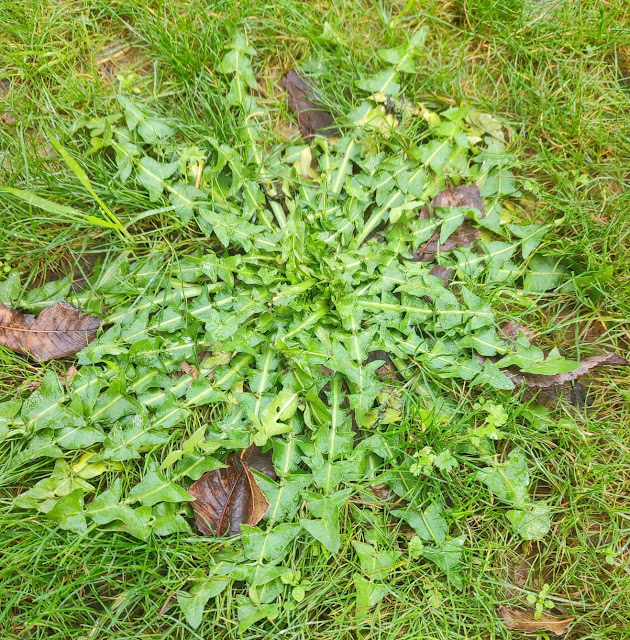As soon as I stepped down the stairs at the front entrance to walk around to the yard, I was greeted with this beautiful specimen of dandelion leaves, a bitter but healthy green, with many medicinal qualities.
Just a step later at the base of a tree I saw this luscious patch of chickweed, a terrific salad green with a delicious and mild flavor, with medicinal properties, such as being able to draw out infections when made into a poultice.
At the base of the next tree, I saw some nettles, a plant many hate because it stings, but once you neutralize the stinger via drying, cooking, or blending, they are terrific in many dishes and also help fight allergiess.
Then I got to the adjoining side and back yard and there was so, so, so much mallow, one of the most common wild greens round these parts, and for many people, their first wild edible they learn to identify.
Then I saw this giant sow thistle plant (and another few smaller ones nearby) right next to it. It's a little bigger than the stage I prefer to eat it, as it gets more bitter the older it is, but it is terrific both raw and cooked.
Then among some more mallow there were a bunch of thistles. I'm not completely sure which one this is, but all thistle types are edible, so long as you carefully remove their thorns. (There's also a lonely henbit in there.)
I saw so, so, so many dandelion rosettes like this all over the yard, not just along the sidewalk where its best to not pick because you don't know who sprayed what there. But these are perfect for picking.
Then there was a patch of henbit, a cousin of mint with a taste that is nothing like mint, but I've heard people describe its taste in so many different ways... To me it just tastes "green". Ha. Then there's these dovesfoot cranesbill geranium (isn't that a mouthful) which I personally am not a fan of its taste, but I end up teaching about it in all my foraging classes because some people confuse it with mallow... which it is only very distantly related to, but both are edible, so mixing them up isn't dangerous.
And then last but not least, just outside the back door of the building, there was a huge patch of cleavers, also known as bedstraw. Its texture is quite funky and not so pleasant to eat as is, but cooked it is much better, and it is very healthy for your lympatic system when made into tea or soup.
Anyhow, I just needed to share how amazing it is to see so many different wild edible plants growing in one tiny area. My foraging classes often don't cover large distances because they don't need to- in just one little yard I found such a large variety of wild edibles. Foraging doesn't have to be hard work- you can pick a feast right in your own backyard!
Are you a forager? What's the most recent thing you foraged? If you're not a forager, do you recognize any of these plants?
Tags
extreme frugality
foraged
foraging
foraging id
free things
frugal
frugal food
frugal strategies
job
jobs
plants
wild edibles














What a great find!
ReplyDeleteI so enjoyed this armchair forage- thank you for sharing your experience, with beautiful photos!
ReplyDelete